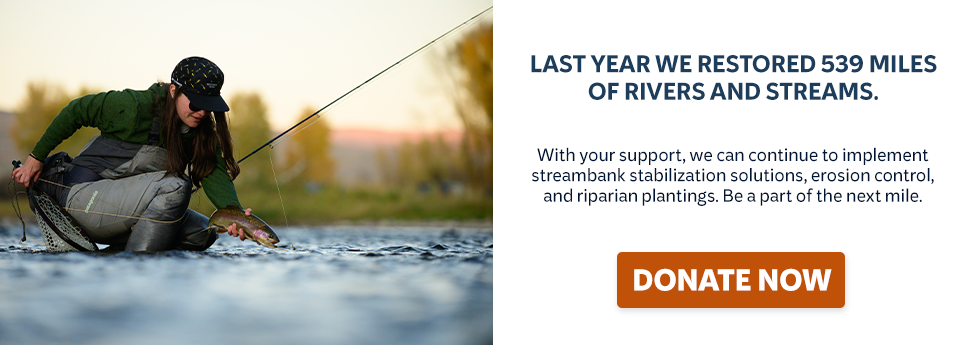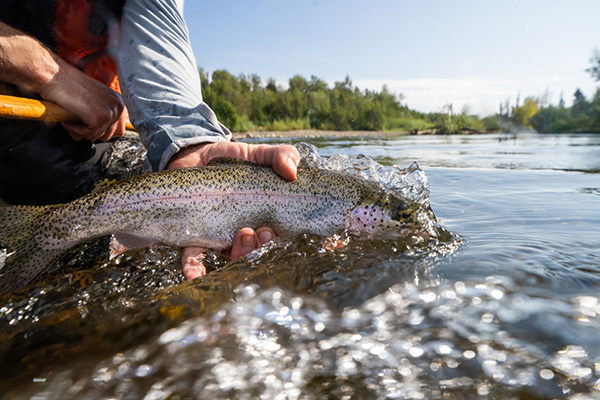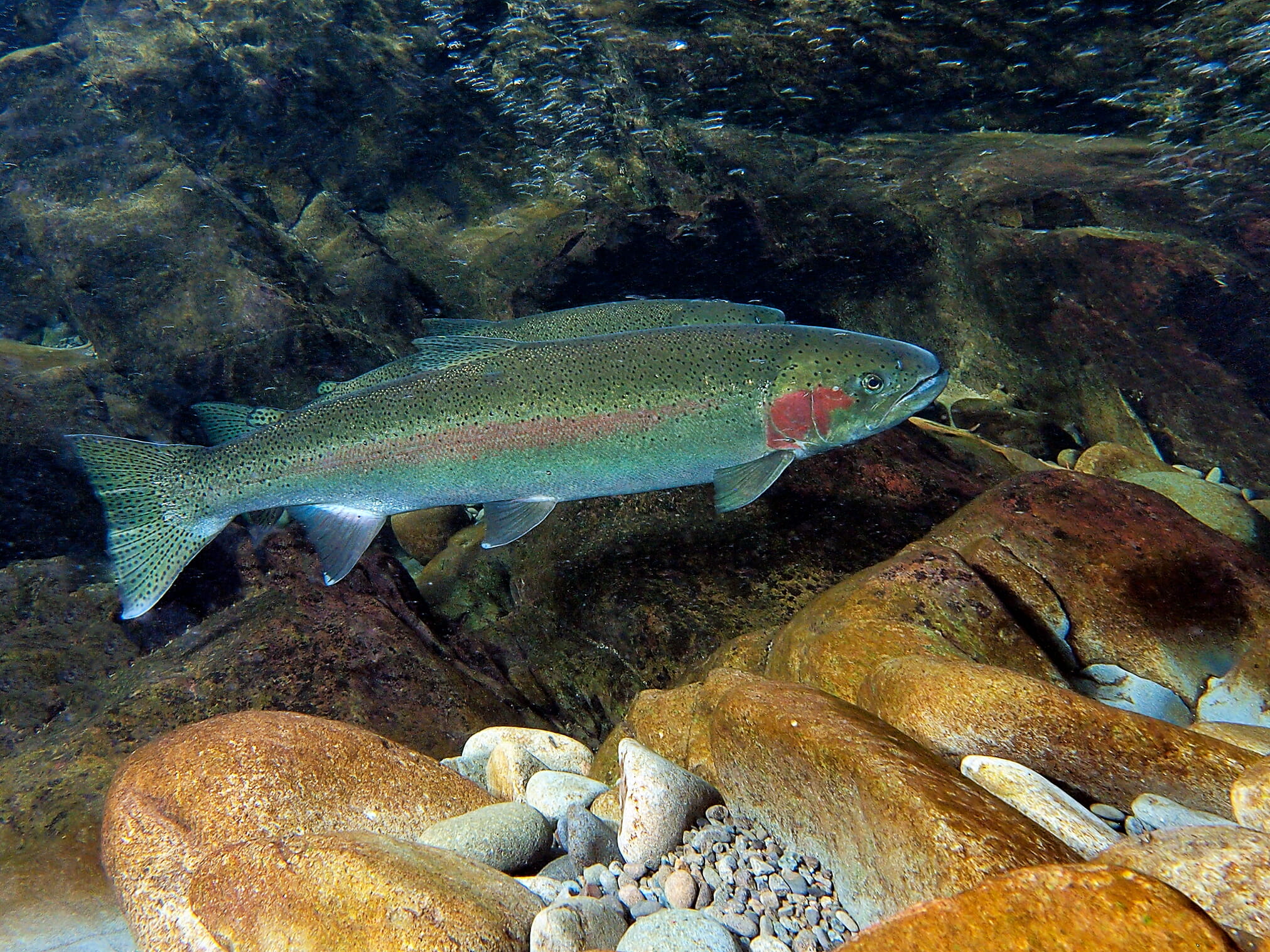
Our scientific work on the biology, behavior, and ecology of steelhead and rainbow trout focuses strongly on mechanisms influencing life histories, or the strategies these fish use – such as anadromy and residency – to make best use of their environment. As one example John McMillan, Trout Unlimited’s Science Director for the Wild Steelhead Initiative, has worked as part of a team of scientists studying O. mykiss and other salmonids prior to, during, and after dam removal in the Elwha River to understand how they take advantage of newly-reconnected habitat.
Steelhead display the greatest combined array of life histories of any salmonid, and that diversity can be affected by many human-related and natural factors ranging from hatcheries and habitat degradation to water temperature and stream flow regimes. A better understanding of patterns and processes in O. mykiss diversity is essential to crafting science-based policy, such as recovery and management plans, and can be applied to help predict how O. mykiss might respond to habitat restoration and climate change. To date, the Elwha River represents the largest dam removal project in North America. Research on steelhead and Coho salmon recolonization is just starting to mature and reach the point where more studies will be published, the results of which should demonstrate the value of dam removal in recovering ESA-listed salmonids and help inform strategies for future dam removal projects.
Resources
Steelhead from the Klamath and Rogue rivers in northern California-Southern Oregon display the unique half-pounder life history wherein fish return from sea only several months after initial ocean entry. For years, this life history remained something of a mystery or paradox. We evaluated the influencing factors and consequences of the half-pounder life history so as to better understand the phenomenon. We concluded, based on observations and theoretical models, that the half-pounder life history persists in Klamath River steelhead because it occasionally confers breeding and survival-related benefits during the first ocean winter.
In this study we found wild Klamath River steelhead display at least 38 different life histories or pathways from hatch to spawn. They will, for example, spend from one to three years in freshwater before migrating to sea, and from two months to four years at sea before returning to freshwater to spawn. Some steelhead spawn repeatedly in a life time, and some (rainbow trout) spawn without ever migrating. The benefit of all this diversity is dispersal of risk. In simple terms, Klamath River steelhead put their eggs into a relatively large number of baskets, and in doing so, stabilize the population over time.
What happens when returns of salmon and steelhead to a hatchery exceed management requirements? One management action is recycling, where collected adults are for additional angling opportunity, as happens with summer steelhead in the upper Willamette River basin, Historically, winter steelhead were the only run of steelhead present in the basin upstream of Willamette Falls. Summer steelhead from an out-of-basin stock (i.e., genetically different from the native winter steelhead) were introduced in the 1960s to mitigate for loss of winter steelhead habitat from the construction of flood-control dams in the basin. Winter steelhead in the upper Willamette River basin are now listed as threatened under the Endangered Species Act.
From 2012-2014, 423 summer steelhead were collected as they returned to two hatcheries in the upper Willamette River basin, tagged with radio tags, and then recycled downstream at a variety of locations. More than 40 radiotelemetry receivers were positioned throughout the basin to track what happens to these fish after they are recycled.
Overall, reported harvest rate of recycled steelhead was low (15 percent) and most individuals (62 percent) were last detected in the release tributary (i.e., did not return to a hatchery). However, 14 percent of radio-tagged recycled steelhead were last detected outside the release tributary (i.e., strayed after release) and expanded estimates indicated the number of recycled summer steelhead remaining in an important winter steelhead spawning tributary (South Santiam River) exceeded the winter steelhead spawning population size. Low reported harvest and straying and demographic estimates indicate the recycling program may have unintended effects on native winter steelhead in this basin.
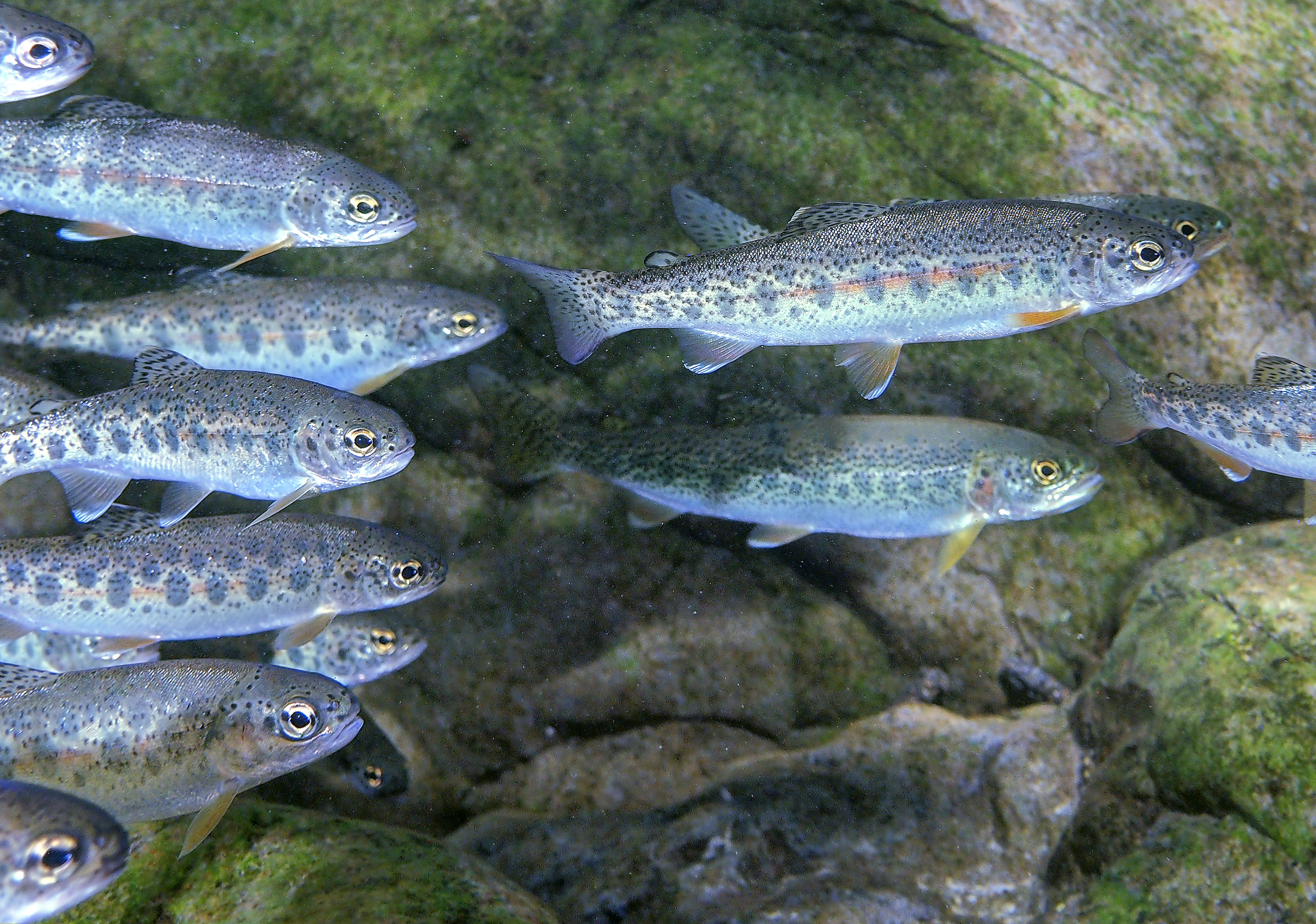
Reproductive tactics and migratory strategies in Pacific and Atlantic salmonines are inextricably linked through the impacts of migration (or lack thereof) on age and size at maturity. In this review, we focused on the ecological and evolutionary patterns of freshwater maturation in salmonines, a key process resulting in the diversification of their life histories. We demonstrated the energetics of maturation and reproduction provide a unifying theme for understanding both the proximate and ultimate causes of variation in reproductive schedules among species, populations, and the sexes. We use probabilistic maturation reaction norms to illustrate how variation in individual condition, in terms of body size, growth rate, and lipid storage, influences the timing of maturation. This useful framework integrates both genetic and environmental contributions to conditional strategies for maturation and, in doing so, demonstrates how flexible life histories can be both heritable and subject to strong environmental influences.
Recolonization of anadromous rainbow trout into areas that were previously occupied solely by resident rainbow trout presents a challenge for monitoring because: staging or spawning adults may be difficult to observe directly; and the offspring of the two life history forms are indistinguishable during early life. We evaluated the utility of using redd attributes, fry (age‐0) size, and fry density to distinguish the presence of steelhead and rainbow trout in Washington’s Elwha River. Redd area and substrate size differed between forms: steelhead redds were significantly larger and had a greater median substrate particle size than rainbow trout redds. Fry density was significantly higher in steelhead spawning reaches than in rainbow trout reaches during both survey years (2010 and 2011). Steelhead fry tended to be slightly larger than rainbow trout fry but not significantly so in either year.
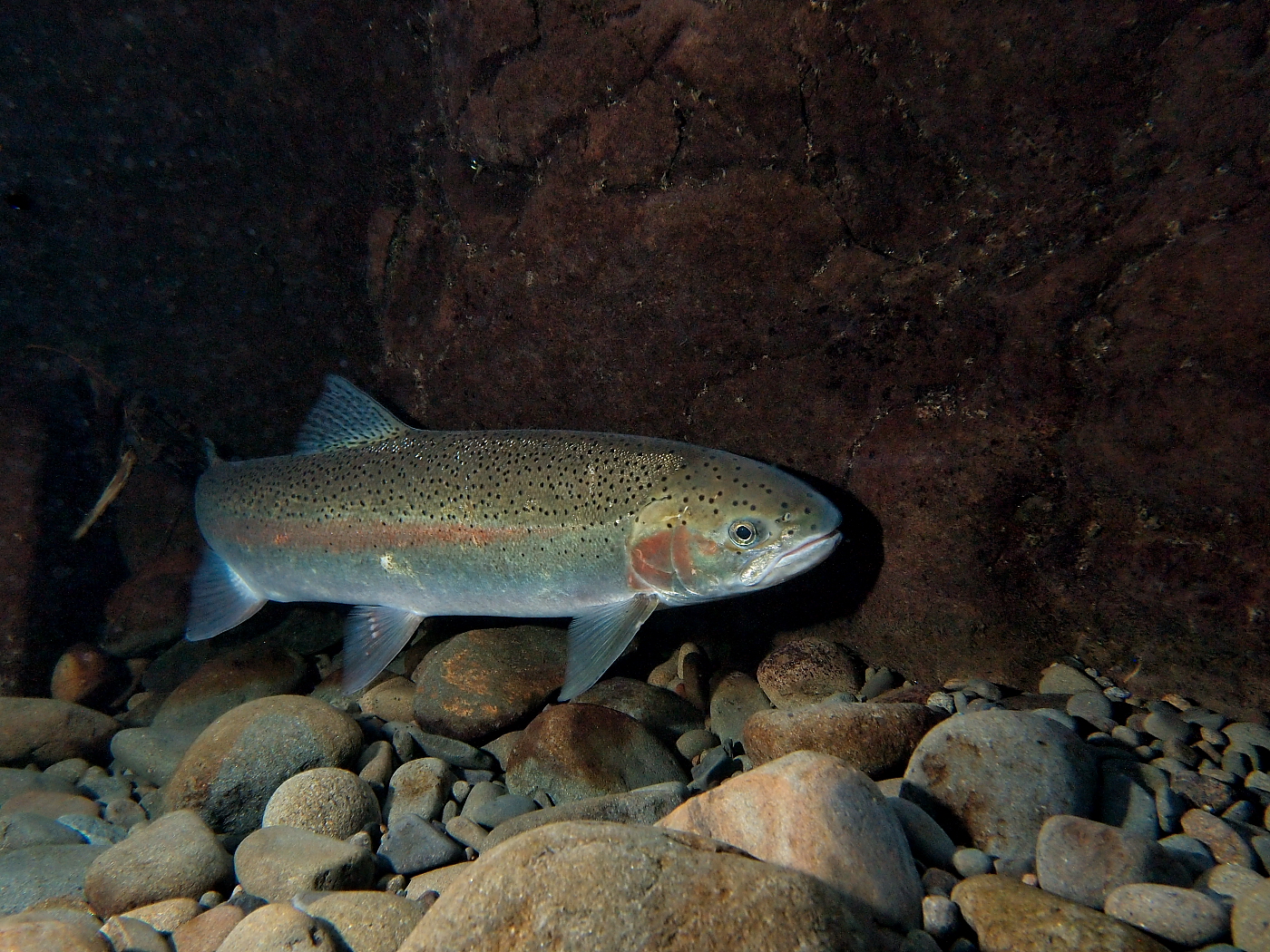
Oncorhynchus mykiss form partially migratory populations, with anadromous fish that undergo marine migrations and residents that complete their life cycle in fresh water. In this paper, we synthesize information to characterize genetic and environmental influences on O. mykiss life histories, identify critical knowledge gaps, and suggest next steps. First, we found that an increasing body of literature suggests that anadromous and resident individuals differ in the expression of genes related to growth, smoltification, and metabolism. Second, the literature supports the conditional strategy theory, where individuals adopt a life history pattern based on their conditional status relative to genetic thresholds along with ultimate effects of size and age at maturation and opportunities for repeat spawning. Thus, individuals can exhibit plasticity, or flexibility in their migratory strategy, in variable environments. Finally, patterns in anadromy and residency among and within populations suggested a wide range of possible environmental influences at different life stages, from freshwater temperature to marine survival.
We used PIT tags implanted in juvenile Oncorhynchus mykiss to monitor movement into and out of two coastal Washington State rivers. Movement patterns revealed at least 18 life histories of steelhead O. mykiss with variations in age and seasonal migration of juveniles, juvenile use of the ocean prior to migration, years spent in the ocean, season of adult return, and iteroparity. While most migrants left the river in their first fall or winter, we did not detect any returning adults from these age‐0 migrants. Adults were only produced from age‐1 and older migrants, of which most were age‐2 spring migrants that returned after two summers in the ocean. Our results indicated a positive relationship between fish length at tagging and the probability of being detected as a migrant, while the probability of a migrant leaving at age 1 and older decreased with increasing length at tagging among fish that were detected as migrants.
In 2012 the lower of two Elwha River dams was breached, restoring access of anadromous salmonids to the middle Elwha River (between the two dams), including two distinct tributaries, Indian Creek and Little River. While comparable in size, Indian Creek is considerably less steep than Little River (mean slope of 1.0% versus 3.5%, respectively) and has a warmer stream temperature regime due to its source, Lake Sutherland. During and after breaching, coho salmon Oncorhynchus kisutch were relocated to these tributaries from lower Elwha River hatcheries (below the dams) to determine if individuals from a hatchery-dominated population would successfully spawn and seed the systems with juveniles and to assess differences in recolonization between the streams. Transplantation led to immediate spawning, which resulted in levels of smolt out-migrants per stream kilometer comparable with other established coho salmon populations in the Pacific Northwest. During the first 2 years of the relocation, redd densities in the two systems were similar but Indian Creek produced four to five times as many smolts per kilometer as Little River. In addition, fry out-migration occurred 2 to 4 weeks earlier in Indian Creek, as predicted by the warmer incubation temperatures.

